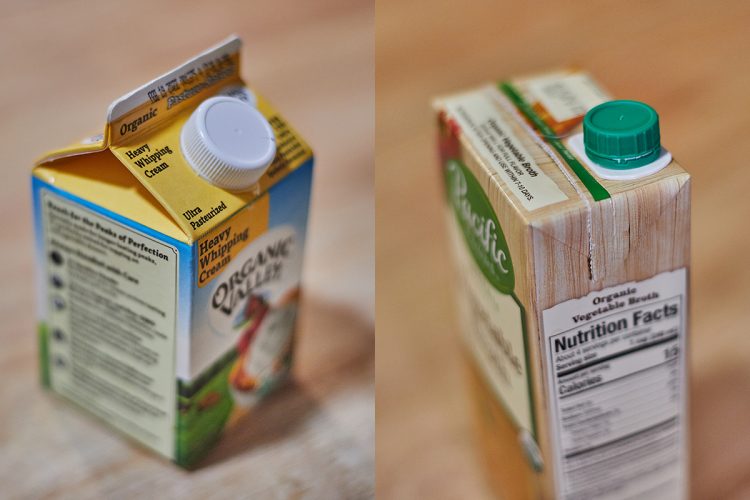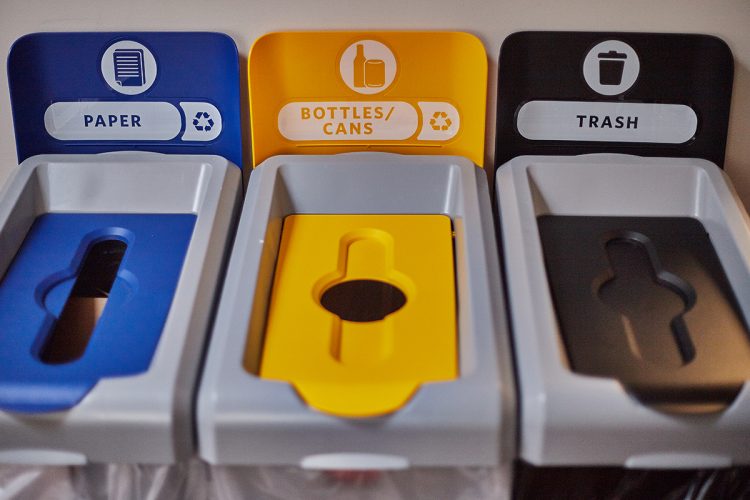Adam Mitchell, Mr. T Carting Resource Manager
Gable Top Cartons, also known as Milk Cartons, are a curious issue in post-consumer recycling. They’re ubiquitous–chances are if you’ve gone to public school in the US, you’ve sipped milk out of a Gable Top Carton (GTC). GTCs are mostly made from renewable materials, making them much more sustainable than plastic containers. They’re much lighter than glass bottles, meaning they produce less of a carbon footprint when being transported. Cartons are recyclable, but not in every county, and not through every company. In fact, only 62% of American households have access to waste services that can repurpose GTCs. That means that over a third of the US does not have the ability to recycle cartons.
There are two types of cartons: Gable Top Cartons, and Aseptic Cartons. GTCs are made up of about 80% paper, and 20% plastic. They’re used to hold perishable goods like milk and orange juice. Oat milk, and other nonperishables are packaged in aseptic cartons, which are the shelf-stable siblings to GTCs. Aseptic packaging is usually made up of about 74% paper, 22% plastic, and 4% aluminum. Both types of packaging are recyclable with proper equipment.

When cartons are recycled, they’re usually processed with paper products. At a paper mill, they are mixed with water, and processed in a hydrapulper. These industrial-sized blenders separate the base materials, and allow them to be reused. The paper pulp is used to make printing paper, paper towels, and toilet paper. The aluminum and plastic can be repurposed into building materials. This process is made more difficult when materials are tightly layered, or are heavily contaminated. Pizza boxes with a lot of grease can cause similar problems, as the fats are unable to be separated due to the hydrapulper operating at cooler temperatures than plastics or metal recycling.
When recycled GTCs and Aseptic Cartons are sent to the landfill, public trust in recycling programs is eroded. If a facility isn’t prepared to process cartons, then any placed in the recycling will instead be sent to a landfill. In the past, it’s been difficult to ascertain if cartons will be recycled, further adding to the confusion and frustration of trying to follow sustainable practices.

Clear messaging is essential to achieving the goal of Zero Waste. Wish-Cycling, the act of recycling an item without knowing if it can be recycled, is a symptom of poor messaging. Gable Top Cartons will continue to be used as packaging. It’s up to waste haulers to maintain a clear line of dialogue with consumers about what can, and won’t be recycled. Mr. T Carting uses Recycle it Right to help guide users into what can, and cannot be recycled through our services. If you have an object and you’re unsure how to dispose of it, you can type it into RiR and learn how to safely, and sustainably discard it. Consistent, clear messaging is how we will get to zero waste, and Mr. T Carting is proud to do our part.
To learn more about Mr. T Carting’s Services, please visit us online at www.MrTCarting.com, email us at CustomerService@MrTCarting.com, or call us at (718) 821-9706.
Mr. T Carting Corporation, 73-10 Edsall Ave, Glendale, NY 11385, BIC # 173
